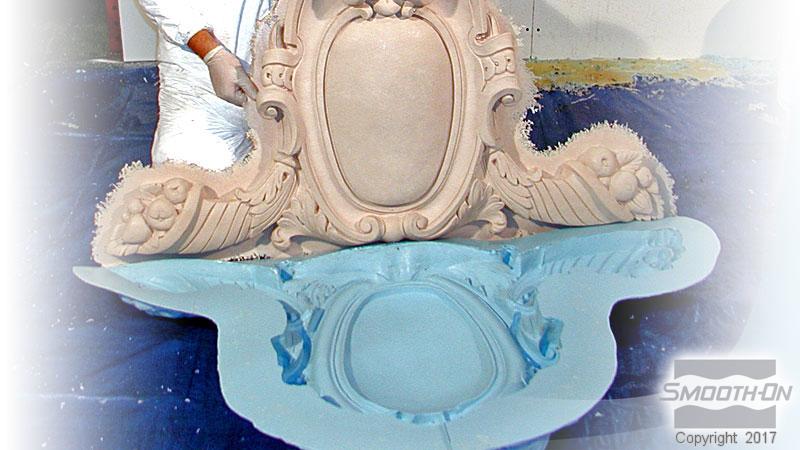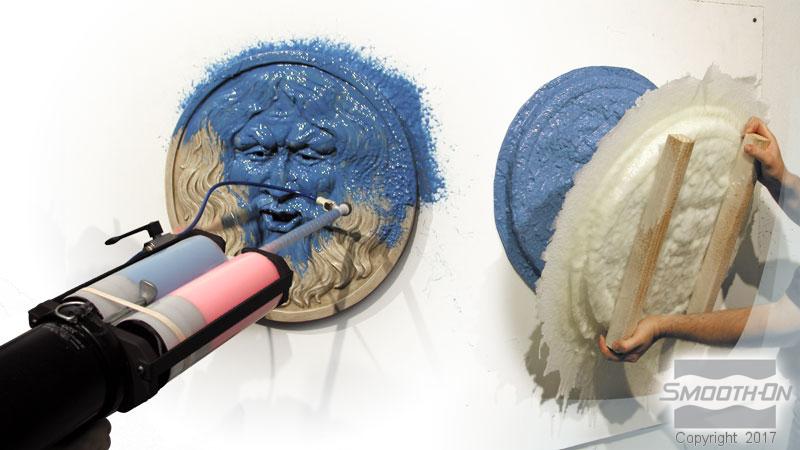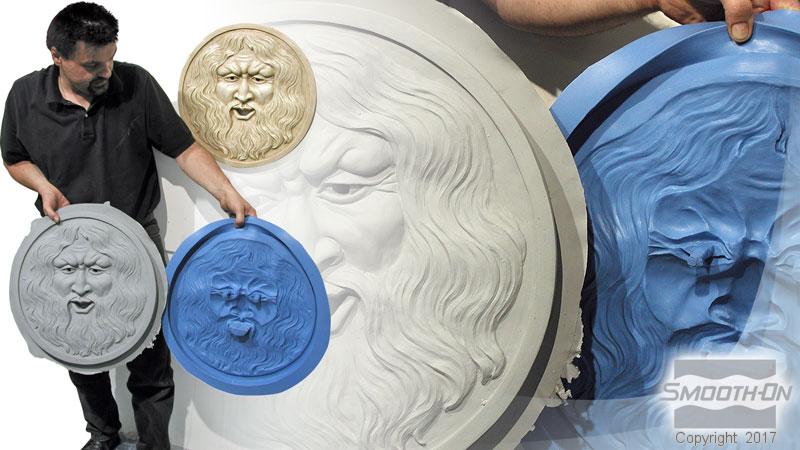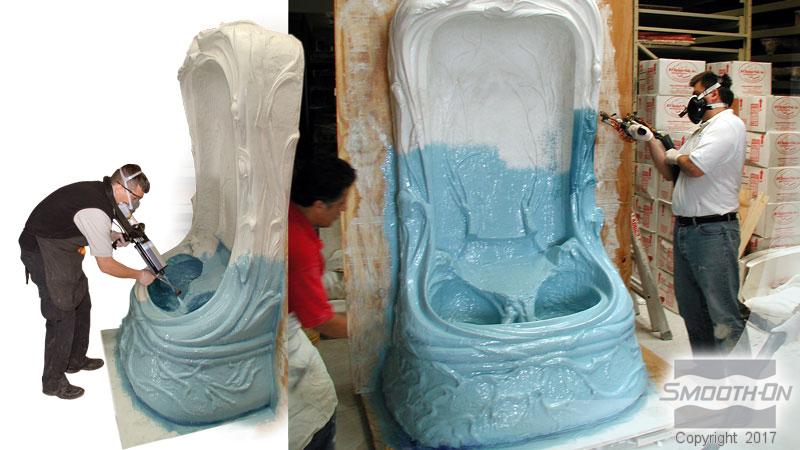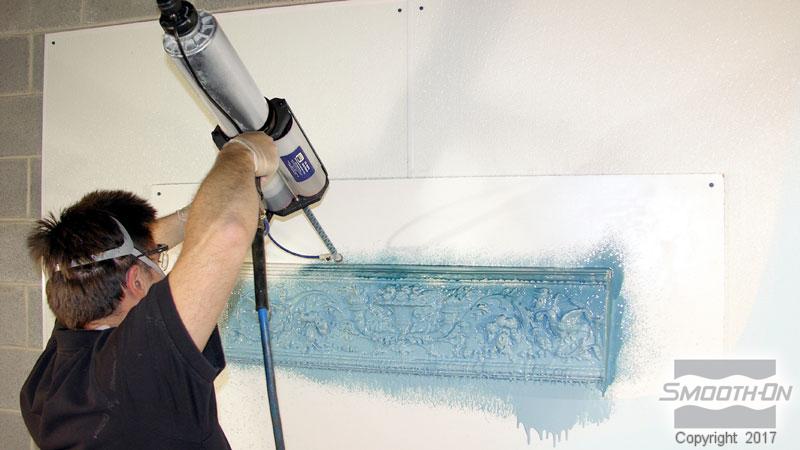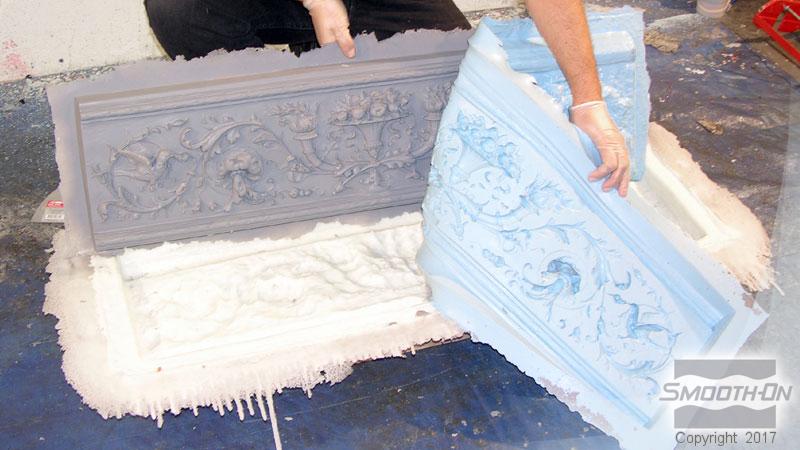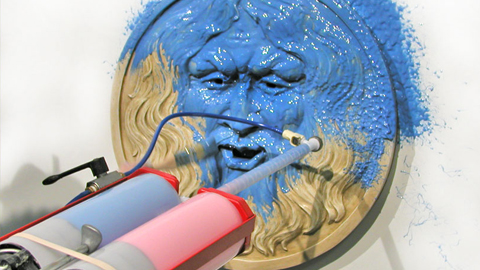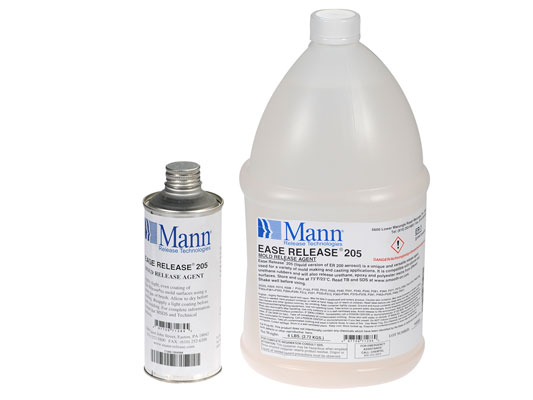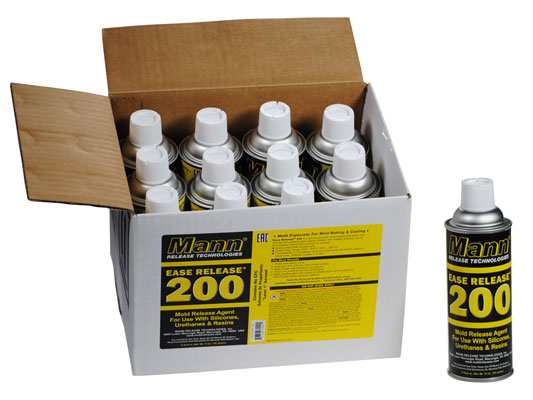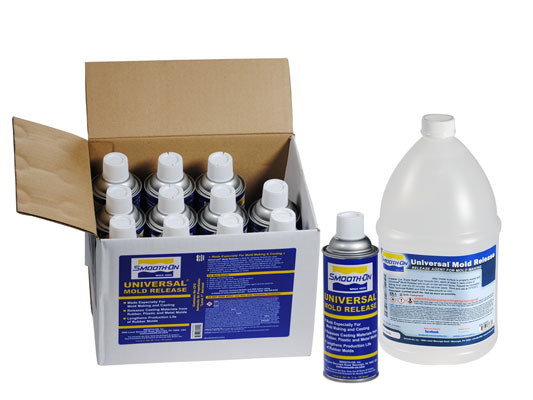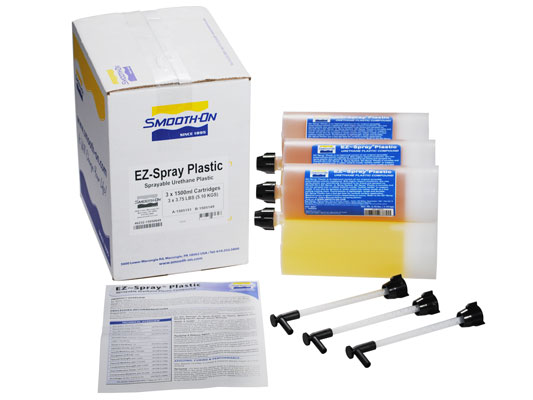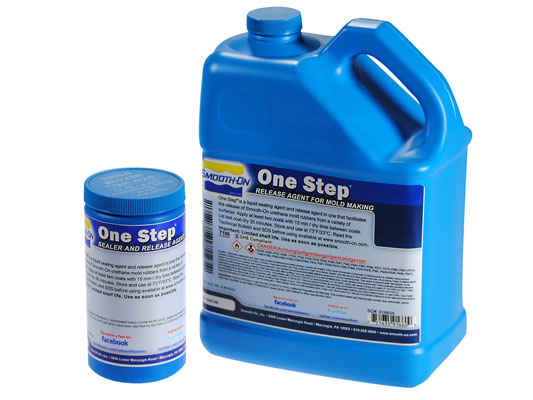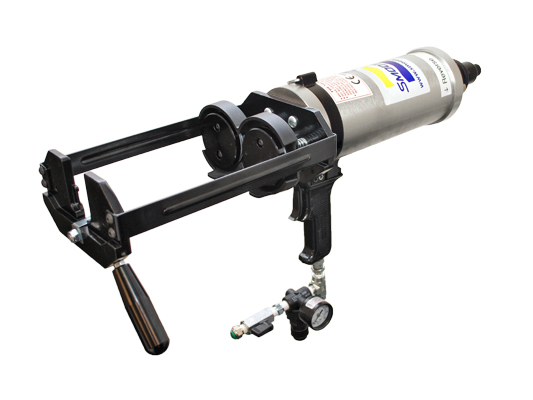EZ-Spray® 45
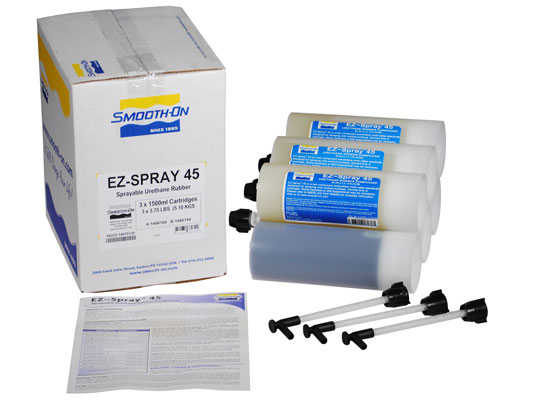
说明
Do Not Attempt To Spray Rubber Or Plastic Without First Reading The EZ~Spray® Junior Manual!
Applying A Sealer / Release Agent - To prevent adhesion between the rubber and model surface, models made of porous materials (gypsum plasters, concrete, wood, stone, etc.) must be sealed prior to applying a release agent. Superseal® (available from Smooth-On) is a fast drying sealer suitable for sealing porous surfaces without interfering with surface detail. Shellac is suitable for rough contours and modeling clays that contain sulfur or moisture (water based). Non-Porous models made of metal, glass, acrylic, PVC, other hard plastics and sulfur-free clays require only a release agent which should be allowed to dry before applying the rubber.
In all cases, the sealing agent should be applied and allowed to completely dry prior to applying a release agent.
Polyurethanes are adhesive. A release agent is required to facilitate demolding. You can purchase a suitable release agent (Universal Mold Release) from Smooth-On or from your local Smooth-On Distributor.
IMPORTANT: Apply release agent to all surfaces that will contact the rubber. To ensure thorough coverage, lightly brush the release agent with a soft brush over all surfaces of the model. Follow with a light mist coating and let the release agent dry for 15 minutes.
Because no two applications are quite the same, a small test application to determine suitability for your project is recommended if performance of this material is in question.
After material cartridge is loaded and prepared, depress EZ~Spray gun trigger and begin spraying.
Applying The Rubber - This product must be sprayed in layers. Generally, 4 layers (minimum 3/8”-1/2” or 1 cm thickness) is suitable for a working mold. The first layer, the detail coat, is a thin layer to capture model detail. Subsequent coats will add strength to the mold. Spray undercuts and recesses first. Let the first coat dry for 10 minutes at room temperature or when it becomes “tacky” before adding the next coat. Repeat until the necessary thickness is achieved. Do not allow rubber to fully cure between layers, as delaminating may result.
Curing - Allow the mold to cure overnight (at least 16 hours) at room temperature (73°F/23°C) before demolding. Do not cure rubber where temperature is less than 65°F/18°C. Post curing the rubber after rubber has cured at room temp. (applying heat – 150°F/65°C for 4 – 6 hours) will increase physical properties and performance significantly.
Apply Support Shell - After all layers of rubber fully cure (overnight) a support shell should be applied over the rubber mold. This will prevent the mold from distorting when casting into it. Use Smooth-On’s EZ~Spray® Plastic to apply on a hard, durable and lightweight plastic shell.
Using The Mold - A release agent facilitates demolding and should be applied to the mold before each casting. The type of release agent to use depends on the material being cast. Universal Mold Release is good for releasing resins recommended for most applications and is available from Smooth-On or your local distributor. The mold should be sprayed with the release agent, brushed over all surface areas and allowed to dry before casting. To ensure thorough coverage, lightly brush the release agent with a soft brush over all surfaces of the model (especially areas of intricate detail). Apply a second thin mist coating and let dry for 15 minutes casting.
Mold Performance & Storage - Fully cured molds are tough, durable and will perform if properly used and stored. The physical life of the mold depends on how you use it (materials cast, frequency, etc.). Casting abrasive materials such as concrete will eventually erode mold detail, while casting non-abrasive materials (wax) will not affect mold detail. Using the right release agent is essential in all cases. Contact Smooth-On to discuss your particular application. Before storing, the mold should be cleaned with a soap solution and wiped fully dry. Two part (or more) molds should be assembled. Molds should be stored on a level surface in a cool, dry environment. Do not stack molds, expose them to moisture or UV light.
